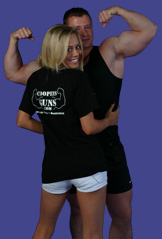Appendix E : Results of questionnaire
Results of questionnaire
Summary of Questionnaire Response
Five hundred questionnaires were randomly distributed to ACPSM members, of which 226 were returned, which was a response rate of 4.2 percent. Here follows a brief summary of the responses for each section of the questionnaire.
Not all of those who returned the questionnaire responded to each question, or to each part of each question. The figures quoted refer to the percentage of responses of the total who returned the questionnaire, not to the responses to each question, the assumption being that if an individual did not respond to a question/part of a question, the individual did not use/ apply the modality in question. For ease of reporting, the ‘usually’ and ’sometimes’ categories have been combined to indicate a positive response; the ‘rarely’ category has been interpreted as indicating a negative response.
Protection
Eighty nine percent prescribed specific protection, with crutches (82%) and slings (56%) being used most commonly, non-inflatable splints used by under half the respondents (38%). Inflatable splints were rarely used (17%).
Rest
A high percentage (92%) prescribed rest, although less than half (31%) prescribed general rest. Seventy eighty percent prescribed complete rest of the injured part, and 86% allowed activity within the limits of pain. Surprisingly, 8% allowed any activity, and 1% gave no instructions regarding rest/ activity.
Ice
In the hospital/ clinic setting, crushed ice was the most popular means of applying cold, with 69% of respondents using this method. Other methods commonly employed were gel packs (54%), ice massage (40%), cryocuff (38%), ice cubes (38%), and contrast baths (33%). Less commonly used were cold water (17%), chemical packs (9%) and cold sprays (9%). For the application of ice in this setting, 67% used damp towels, 48% used plastic bags and damp towels, 40% used oil and 32% used plastic bags alone. Plastic bags and dry towels (9%) and dry towels (8%) were rarely used.
In the sporting environment the mode of application of cold was more evenly spread, with gel packs (56%), crushed ice (47%), ice cubes (43%), and cold sprays (42%) being most popular. Less commonly used were chemical packs (33%), cold water (30%), ice massage (29%) and contrast baths (12%). For the application of ice, 44% used damp towels, 43% used plastic bags, 39% used plastic bags and damp towels and 21% used oil. Again, plastic bags and dry towels (9%) and dry towels (6%) were rarely used.
Forty six percent applied ice/ cold for between 11 and 20 minutes, 40% applied it for more than 20 minutes, and 12% applied it for less than 10 minutes. Sixty-seven percent recommended that ice / cold should be applied 3-5 times/ day, 27% recommended hourly when awake, and four percent recommended one-to-two times/ day.
Compression
Ninety-eight percent of the total prescribed compression, with 84% using tubigrip and 74% using taping/ strapping in the hospital/ clinic environment. In this location, 49% used stretch bandages, 36% used crepe bandages, 33% used flowtron, and 12% used non-stretch bandages. In the sporting environment, 69% used taping/ strapping, 66% used tubigrip, 51% used stretch bandages and 34% used crepe bandages. Only 11% used non-stretch bandages, and 7% used flowtron.
Seventy-nine percent removed compression for treatment purposes, and 78% removed it for application of ice/ cold. Sixty-nine percent recommended that compression should be removed at night, but 37% advocated that it should be maintained permanently. Seventeen percent would remove compression for activity.
Elevation
Ninety-six percent of the total prescribed elevation, with 97% advising ‘as much as possible’, and 23% continual elevation during the day. During the day, 56% suggested elevation above the level of the proximal joint, 53% above the level of the heart, and 48% supine, above the level of the heart. Fourteen percent advocated that the limb should be horizontal, and 13% suggested supine lying.
During the night, 75% suggested elevation ‘as much as possible’, and 44% suggested continual elevation. At night, 51% prescribed elevation in supine with the injury above the heart, 43% suggested elevation above the proximal joint, and 35% above the heart. 22% advised supine lying, and 17% suggested that the limb should be horizontal.
